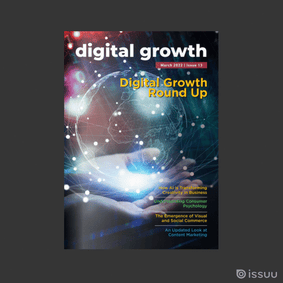In the simplest of terms, ERC-721 is a standard interface for NFTs. These can also be referred to as deeds. In this article, we’ll be taking a look at what ERC-721 is, how it came about, and why you need to know about it. If you’re into NFTs, listen up.
What is an ERC Smart Contract?
The ERC-721 is setting the standard for NFTs. It is defined by a unique token that can have different values from any other token on the same smart contract. Tokens can be individually priced based on their rarity, age and visual (the unique tokenID). Here is everything you need to know about ERC-721.
NFTs can be a multitude of things, from collectibles to access keys, tickets, and digital art. With endless opportunities in the NFT space, there is a need for proper standardization to protect these unique tokens. That is where ERC-721 comes into play.
What is ERC-721?
ERC-721 is Ethereal Request for Comments 721, an NFT standard that implements an API for tokens within smart contracts. It was proposed by William Entriken, Dieter Shirley, Jacob Evans, Nastassia Sachs in January 2018.
This standard builds on the years since EIP-20 was created. This version was unable to track NFTs.
ERC-721’s functionalities include the ability to track and transfer NFTs. This encapsulates the moving of tokens between accounts, getting the current token abalone of an account, getting details about an owner of a specific token, and the total supply of the tokens available on the network. Importantly, it can also offer the ability to approve the amount a token can be moved from one account by a third party account.
Smart contracts are being used more often due to their robust security and terms. Now, these contracts can be an ERC-721 Non-Fungible Token Contract. For this to occur, it needs to implement certain methods and events. Once deployed, it keeps track of the created tokens on Ethereum.
The Simplified Explanation of How NFTs Relate to ERC-721
NFTs represent ownership of an asset. These can be owned and transacted by individuals and on consignment by brokers, wallets, and auctioneers.
The standard interface works with any NFT on Ethereum. Simple ERC-721 smart contracts can be drafted as well as contracts that track large numbers of NFTs.
This Ethereum-based token standard forms part of the ecosystem and supports a significant amount of NFTs.

How to Process of Standardized Tokens Came About
Before ERC-21, most tokens on blockchains functioned as a currency, storing value, or stock. Now it has become easy to create tokens that are cryptographically unique and verifiable. This can be linked to all kinds of content, from artwork to music.
Anyone can submit an EIP. It will go through a process of revisions before being accepted by the community. If it is accepted, it moves to an Ethereum Request of Comments, or a standard process for Ethereum applications.
When we say ERC-721 is a standard, you can think of it as a format that developers agree to follow. This makes the writing of code easier, more predictable, and reusable. While the system is voluntary, it can result in greater compatibility between apps in the marketplace.
Earlier we referred to these NFTs as deeds. That is because being in possession of one means you hold the rights to that token and what it represents. The term NFT is used as the deed is a term often related to property, whereas NFTs have a much wider range of possible applications.
Producing an ERC-721 is simple. It is a smart contract, which is a code on Ethereum. The token is created by programming code and then populated with unique details and the potential to add in extra functionality.
Purchasing an ERC-721 NFT
NFT marketplaces are filled with tokens. The process of buying and storing these is an easy process. You can connect an Ethereum wallet and purchase NFT using ETH. It can then be stored in your Ethereum wallet (there are software and hardware versions).
ERC-721 NFTs are most commonly used for digital art. Users can purchase these to invest and support artists. Other uses include unique assets for blockchain games or as digital representation of your ownership of high value assets in the real world.
ERC-721 is Atheneum’s first token standard. Other compatible token standards have since emerged, forming part of a growing trend. The new standards will help solve challenges like storage space and integrated functionality. ERC-721 is an important step in the evolution of NFTs, especially when applied to blockchain usage for real world assets.
Discover the Possibilities of Smart Contracts & NFTs
Watch this space. Other smart contract blockchains have also begun to host and support NFTs with their own sets of token standards. Many of these are based on ERC-721. It is a standard that helps to tokenize anything that is inherently unique and uses smart contracts as a new way to transact. The concept of ownership verification is a powerful concept that is expected to grow in the coming years.
Speak with the team at Nexa about how to best position yourself or your brand for Web3, blockchain technology, meta verses, and NFTs. We offer a full host of services to help get you started on the journey towards the future.
%20(1).png?width=2701&height=607&name=BRC_NEXA_LOGO_BLACK%20%26%20VIOLET%20(1)%20(1).png)
%20(1).png?width=2701&height=607&name=BRC_NEXA_LOGO_WHITE%20(2)%20(1).png)









.jpg?length=100&name=eugene-chystiakov-faiIRQfgowA-unsplash%20(2).jpg)





Comments